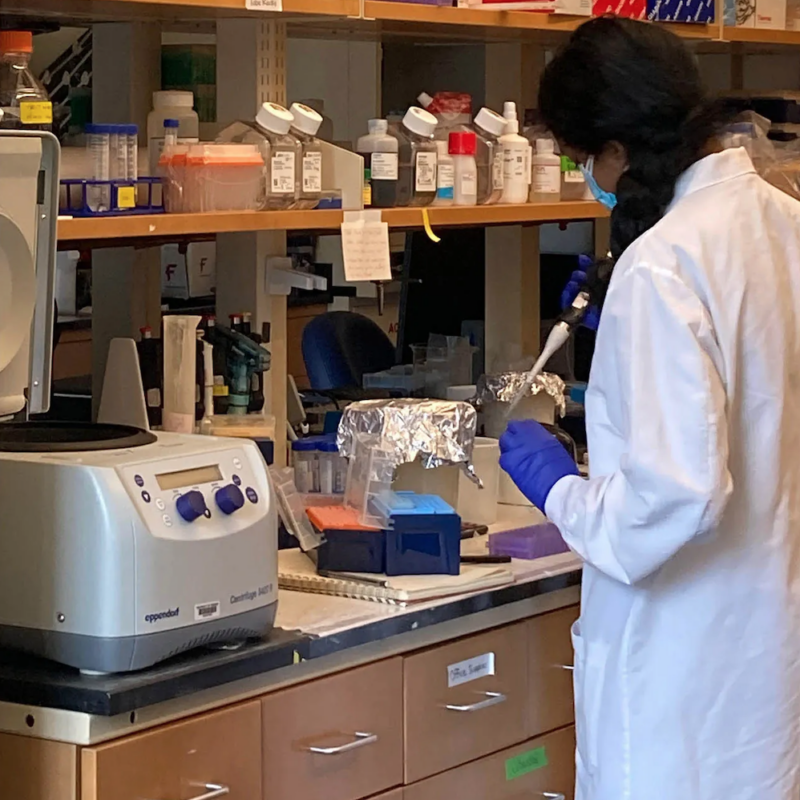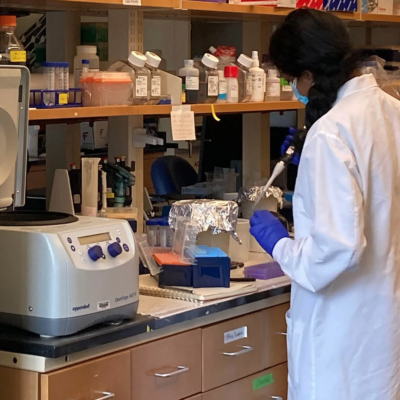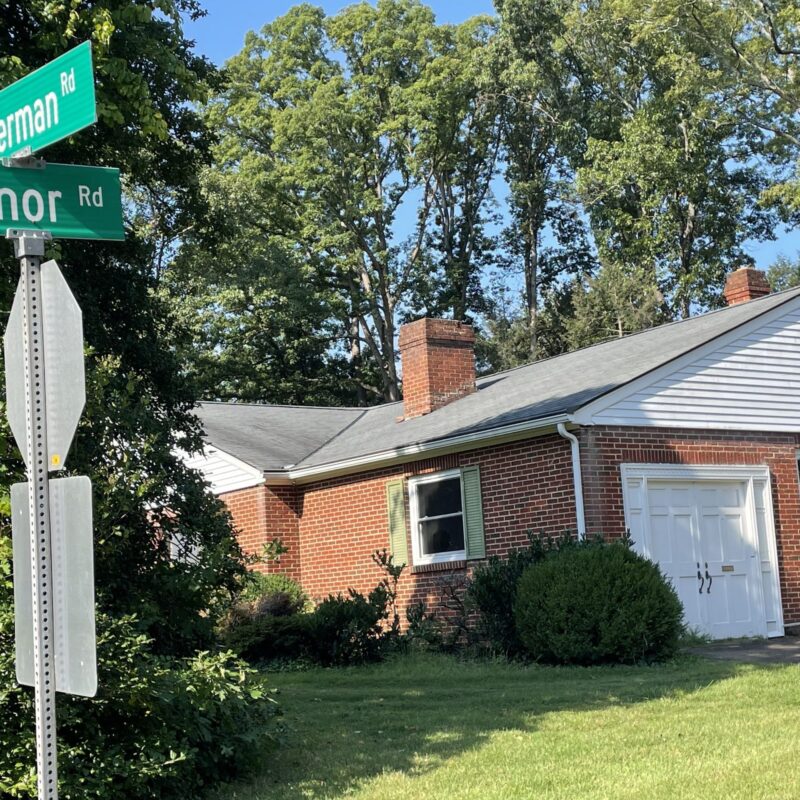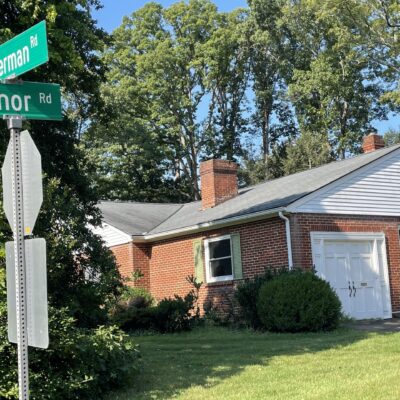| • Click here for an extended version of this interview, including longer answers and more questions. |
In 2005, Ridge Schuyler, then piedmont program director at The Nature Conservancy, was talking to former Albemarle County watershed manager Stephen Bowler when they stumbled on a concept that became the local 50-year water supply plan: a pipeline connecting an expanded Ragged Mountain Reservoir, which has too small of a watershed to fill naturally, with the South Fork Rivanna Reservoir, which has high water flows but fills too easily with sediment.
“The idea seemed so simple that both Stephen and I thought, ‘Well, someone surely must have thought of this before,’” explains Schuyler. In fact, they hadn’t, and when he took it to RWSA, it was quickly embraced.
“The engineers immediately liked it,” says Schuyler. “Not for its environmental benefits, but because it connected two water treatment plants. By connecting them, you share the capacity, it’s cheaper. And because it’s cheaper, the accountants liked it. And so that’s why when the idea was announced in 2006, citizens cheered.”
|
Ridge Schuyler is leaving the waters of the Rivanna River for the swamp of federal politics, though he will remain on the South Fork Reservoir Stewardship Task Force until it issues its report on dredging. |
Not all citizens are cheering now, thanks to a devoted cadre of opponents and a steady drumbeat of anti-water supply plan articles in The Hook. Though state and federal permits are in for a new dam at Ragged Mountain, the plan is on hold while engineers study the projects’ cost estimates, which could be twice as expensive as originally thought because of faulty bedrock at the dam site. At the city’s request, RWSA will commission a review of the pipeline concept. If estimates are too high for the dam or pipeline, the plan could be in serious jeopardy.
Last week, Schuyler, former chief of staff for Congressman Rick Boucher, left his job at The Nature Conservancy to return to politics as Congressman Tom Perriello’s district director. But on his last day, he sat down with C-VILLE to reflect on the controversy surrounding the 50-year water supply plan.
C-VILLE: Do you mind being called the architect of the plan?
Ridge Schuyler: No. I’m proud of the plan. I think the community should be very proud of the plan. And I think the community should be very thankful that our forebears had the foresight to acquire such a great reservoir site at Ragged Mountain 100 years ago.
At first, opposition to the plan was led by a small group. What do you think public opinion is now?
I think there is a lot of the public that has what I would call the cocked eyebrow. Allegations have been made, charges leveled. They’re not quite sure what to think, so they’ve got the cocked eyebrow.
I think once the dam review panel has come back, I think that we’re going to get the answers that we need, and the cocked eyebrow will be lowered and people will be assured that the plan that we have is the best plan for the community.
But when I go to City Council meetings, when I go to the South Fork Rivanna Task Force [on which Schuyler sits], it is the same small group of people at every one of those meetings.
What is the best way forward at this point?
When I look at the facts, what’s clear to me is that dredging all the sediment that’s in the reservoir now for $30 million would allow us to reduce the height of the dam by about 5′. Which would save 14 acres of trees. And we pay a 70 percent premium in order to do that. So the question for the public is, is saving 14 acres of trees worth spending a 70 percent premium so that we dredge? I can’t answer that, but I think that is the question before the public. Unfortunately, it’s not very clearly before the public.
What are the biggest misconceptions?
I think one of the biggest misimpressions that the public has is that dredging is a less expensive option than the Ragged Mountain Reservoir, and there is nothing that I have seen to suggest that that is true.
Based on what is the publicly available information we have now, what we have is a $30 million proposal to take out the sediment that is in the South Fork Rivanna Reservoir, and an $85 million price tag on building a dam at the Ragged Mountain Reservoir. And the proponents of dredging say, ‘Aha, dredging is cheaper, it’s $30 million versus $85 million.’
But nobody shops that way. I looked at the per unit cost. When I looked at the per unit cost of the different storage options—dredging versus building the reservoir—I found that to dredge for $30 million would cost us $83,000 per million gallons stored. Building the reservoir costs us $49,000 per million gallons stored. The difference is 70 percent. It’s a 70 percent premium to dredge versus building the reservoir. Dredging for $30 million meets 21 percent of our need. Building the reservoir meets 100 percent of our need.
How have you reacted to the criticism against both The Nature Conservancy and you personally?
I understand that it’s standard politics to attack the credibility of the people who are offering those ideas. But I see my role at The Nature Conservancy, and I think the role of all of us should be, to solve problems. We, collectively as a community, were presented with a problem: How do we meet our future 50-year water needs while also protecting the environment that we all hold dear? And how do we do that in a way we can all afford? And I’m proud that we came up with a solution that we did all three.
I am completely confident that if we were to weigh our solution against an alternative solution, then either the solution that we came up with will be shown to be the best, or we’ll modify it if there’s a better idea.
How does this compare to other political squabbles you’ve seen?
It is rare to see a discussion over the allocation of natural resources that does not involve a fight of some sort. Usually it’s a fight between developers and environmentalists. In this case, most of the environmental community see the plan that was developed as the one that best protects the environment.
The dialogue has been more angry than I have seen in a lot of political battles. Often, the battles that I’ve seen are battles over ideas. And this discussion has been at times quite rude, not respectful of other people’s opinions, and focused on attacking the credibility of the participants rather than the ideas themselves. And I think in the long run, that’s not the healthiest way to have a community dialogue. If you don’t like an idea that I came up with, attack the idea. That’s the way the public is best informed.
Have we gained anything from the controversy?
I think the greatest benefit that we have seen from this effort is a focus on the future of the South Fork Rivanna Reservoir. What is its role in the community? How should it be managed and maintained over time? And who should pay for that? That is a topic that was not fully addressed, and it is being addressed by the South Fork Stewardship Task Force [on which Schuyler sits].
If the review panel says the dam is too expensive, do we end up with a pipeline to the James?
I think it’s a real possibility. I have yet to see a Plan B that meets the need. What I keep hearing is, ‘Well, dredging is the center piece.’ Well, O.K., what’s the rest of it? Let’s look at it as a potential Plan B.
But I haven’t seen it. And if that doesn’t exist, then maybe a pipe to the James is Plan B. And that worries me. Substantially.
C-VILLE welcomes news tips from readers. Send them to news@c-ville.com.






